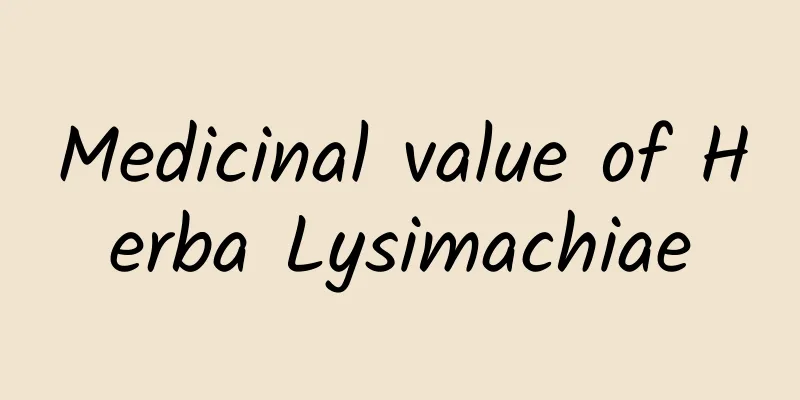The efficacy and function of fine-leaved wild peony

|
I wonder if you have ever heard of the fine-leaved wild peony. The fine-leaved wild peony is of great benefit to regulating our body and can also play a good role in treating some diseases. Today let us look at the relevant knowledge about the fine-leaved wild peony. [Other names] Pudiren, Mountain Pomegranate, Shuishe Wild Peony [Source] Medicinal material source: the whole plant of Melastoma serrata of the Melastomataceae family. [Original form] A short shrub, 30-60cm tall. Erect or prostrate, with branches that are scattered and covered with appressed strigosus. Leaves opposite; petiole 3-6mm long, strigosus; leaf blade elliptic or oblong-elliptic, 2-4cm long, 0.8-2cm wide, apex broadly acute or obtuse, base broadly cuneate or nearly circular, upper surface densely strigosus, hairs hidden under the epidermis, only the tip exposed, sometimes with fine hairs, lower surface of leaves strigosus along the veins; basal veins 5, sometimes 3. The corymbs are terminal, with 1-5 flowers and 2 leaf-like bracts at the base; the pedicels are densely strigose; the bracts are 2, lanceolate, 5-10mm long, and strigose; the calyx is strigose outside, the lobes are lanceolate, ciliate, with 1 small lobe between the lobes, club-shaped, shorter than the lobes; the petals are rose-red to purple, rhombus-obovate, slightly oblique at the top, 2-2.5cm long, about 1.5cm wide, slightly concave at the apex, with a bundle of prickles, and sparse ciliate; the stamens are 5 long and 5 short, the base of the longer connective is elongated and curved, with 2 tubercles at the end, the filaments are slightly shorter than the elongated connective, and the short connective does not extend, and the anthers have 2 tubercles at the base; the ovary is semi-inferior, with bristles at the apex, the fruit is arbor-spherical, truncate, fleshy, indehiscent, about 8mm long, and about 10mm in diameter; the persistent ones are densely strigose. The flowering period is from July to September, and the fruiting period is from October to December. [Habitat distribution] Ecological environment: Growing on hillsides and in grass beside fields below 1,300m above sea level. 【Nature and flavor】 Bitter; Cool 【Functions and indications】 Clears away heat and detoxifies; reduces swelling. Mainly used for dysentery, mouth sores, boils, and snake bites [Usage and Dosage] For oral use: decoction, 6-15g. For external use: take appropriate amount, mash and apply; or decoct in water for washing; or grind into powder and apply. 【Excerpt】 Chinese Materia Medica I believe that after reading the above explanations, everyone has a deeper understanding of the Chinese medicinal herb Paeonia suffruticosa, right? In fact, many foods or medicinal materials are the same. Only when we understand them can we eat them correctly according to our own situation and effectively help maintain our health. |
<<: The efficacy and function of elm flowers
>>: The efficacy and function of Southwestern Small Shade Fern
Recommend
If you learn physics well, you can make the most delicious fried rice...right?
When I was a child, my deskmate Xiaohua asked me:...
"Life-extending magic weapon" may also be a "weapon of harm"? These 9 types of people should drink less coffee!
For modern people, coffee has gradually become a ...
The efficacy and function of Yishan ginseng
Yishan ginseng is actually ginseng, a very rare m...
How to communicate with people you don’t know well enough? Learn “weak ties” to make your life better
As a member of a busy life, we need to have vario...
The efficacy and function of Xiao Liuyuehan
Do you know what Xiao Liuyuehan is? It is a kind ...
Is burdock really delicious?
Is burdock delicious? There are many ways to cook...
Spring ploughing is in progress丨@Mr. Dongpo, your farming equipment has "ploughed" new
@Mr. Dongpo, your farming equipment has been &quo...
What is the function of snow lotus?
At present, snow lotus is a very good health-care...
What are the medicinal values of copper coin grass
Most people may not know what pennywort is, becau...
Summer "high-end meal": beer + seafood? Learn more about gout →
In the hot summer, beer and seafood seem to have ...
Panax notoginseng can treat adenomyosis
Among various traditional Chinese medicines, Pana...
How can a hotel website create the most persuasive sales page?
Open any hotel details page on Booking.com and a ...
Exercising for 1 hour a week equals to earning an extra $170,000 a year?!
Are you curious about the difference between thos...
What are the taboos and benefits of Gorgon fruit?
Gorgon fruit is a traditional Chinese medicine an...
Is the "big crab" in the night sky a trace left by an unusual celestial body thousands of years ago?
Author | Feng Ziyang Review | Dong Chenhui, Zhao ...









